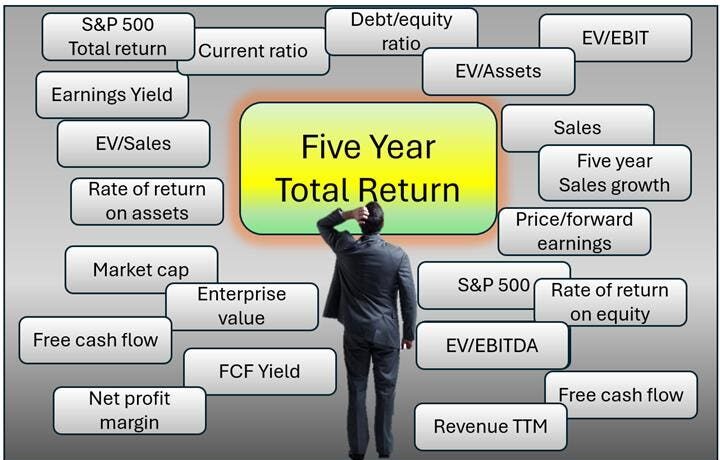Figure 1: Man gazing at multiple indices for analyzing a firm’s performance
“Disney Has Triumphed.” “The End Of Amazon!” “BYD Has Crushed Tesla!” “Big Tech Is History!” “Pfizer is a buy!” How can anyone make sense of the screaming headlines of the financial press, who often seize on a CEO statement or a short-term blip in the stock price and blow things totally out of proportion?
How do we see which firms are truly creating value for their stakeholders on a sustained basis over the years? Is there a simple way to decipher what is significant amid the noise? The question is of particular importance at a time when a paradigm shift is under way in how firms create value, as foreshadowed here. It becomes vital to know: how far are firms are actually creating value, not just saying they are doing so?
Of all the many analytic tools available, as shown above in Figure 1, the 5-Year Total Return of a public firm offers a simple, understandable, accessible tool that enables us to see the underlying value performance and capability of an individual firm, both on its own terms and in relation to its peers or to all public firms. It can help form a basis for making inferences about future performance.
How Barron’s Misjudged Pfizer’s Value Creation Potential
Just yesterday, Barron’s published an insightful article explaining its mistake just over a year ago (February 5, 2023) when it published a piece with the headline “Why Pfizer’s stock is a buy.” The predicted uptick in performance never materialized.
Barron’s current article notes that if it had paid attention to the Pfizer’s Long-Term Return—5 years, 10 years, or even 20 years—it would have realized that Pfizer’s value creation performance has been steadily below average for a long time, even including the bonanza generated by the Covid vaccine developed by its partner, BionTech. An abrupt improvement in value creation was therefore highly unlikely.
By contrast, anyone interested in the value creation of pharmaceutical firms could have seen that the 5-Year Total Returns of Eli Lilly and Novo Nordisk had been steadily above average over the previous 5 years. An inference that they would continue to do so did not require any special insight.
Figure 2: 5-year Total Return: S&P 500, vs Pfizer, Eli Lilly and Novo Nordisk
The 5-Total Return Can Help Reveal The Big Picture
Getting access to a firm’s 5-year total return of a firm doesn’t require any particular knowledge or expertise. The information is instantly available free of charge, at many sites including Finance Charts.
Although the complex adaptive nature of organizations does not permit scientific with-and-without experiments to determine what causes what, or predict the future with certainty, the stock market provides us with a cornucopia of information about past value creation of public companies and consensus predictions and inferences about the future. The stock market can be used for many purposes, including short- and long-term investing, gambling on variations, fund raising, company promotion and more. More important, it can be used for calm assessments of how much value firms are creating for their stakeholders.
Finding one’s way through the maze of data can be challenging. The 5-Year Total Return can be a useful place to start the assessment.
Since a firm’s 5-year Total Return (defined below in Annex 1) reflects “the wisdom of crowds” about the direction and the velocity of a firm’s value creation performance over a sustained period, it can often be the best starting point for making meaningful inferences about
· the nature and causes of past performance.
· the likely velocity of future value creation.
· performance in relation to peers i.e. firms in the same sector.
· performance in relation to all public firms.
· the relative performance of firms of different sizes.
Thus when the 5-Year Total Return of a firm is higher than the 5-Year Total Return of the S&P 500, we can reach a preliminary conclusion that the firm has been steadily creating value for its stakeholders at a faster rate than the average S&P 500 stock over the period.
This is the beginning of the analysis, not the final answer. There may be many other factors to be considered such as sector peculiarities, changes in management or talent, likely competition, economic upheavals, and so on. But at least it provides us a starting point for evaluating these factors.
Two-Thirds Of Firms In The Dow Are Below Average Value Creators
Let’s take the example of the Dow Jones Industrial Average, commonly known as “the Dow”. It contains 30 highly respected “blue chip” firms. These are firms that are internationally recognized, well-established, considered to be financially sound, and publicly traded.
Despite the Dow’s well-known limits as a measure of the overall stock market, the Dow has become synonymous in the public mind with the performance of the U.S. stock market in general. When people say the stock market has gone up or down, they are usually referring to changes in the Dow.
The public is less aware that the performance of the 30 firms in the Dow varies markedly. Some firms consistently perform way above average, while two-thirds of firms in the Dow have been perform consistently below average for the last 5 years, i.e. they have a lower 5-Year Return than the average of all 500 firms in the S&P 500. (Figure 2)
Thus the 5-Year Total Return enables us to see that, despite their sterling reputations, only 12 of the 30 firms in the Dow have been creating value for their stakeholders at a faster rate over 5 years than the average of all 500 firms in the S&P 500.
Figure 3: 5-Year Total Returns Of Firms In the Dow Jones Industrial Average
Meanwhile, the often-criticized big tech firms are above-average value-creators. Overall, the picture are consistent with the hypothesis that a paradigm shift in management is under way.
The 5-Year Return Helps Put Anecdotal Accounts In Context
The 5-year Total Return can also be used to supplement anecdotal accounts of value creation performance. For instance, Columbia Business School professor Rita McGrath has provided us with a brilliant anecdotal account of how Verizon’s processes systematically destroy customer value: “The Better Your Automated Customer Service Options, the Worse Your Customer Service Experience.” Verizon’s very low value-creation performance can be seen in the table in Figure 3. Verizon is at the bottom.. Its performance in relation to its peers can be seen even more clearly in Figure 4. In this way, “a picture can be worth a thousand words.”
Figure 4: 5-Year Total Returns: S&P500 vs Verizon, AT&T and T-Mobil-US
Graphical Depictions Reveal Significant Fluctuations
Other insights can emerge when the 5-Year Total Return is presented graphically. Thus one can see how the firm’s total return has been affected by overall economic ups and downs. (See Figure 5) The 5-year Total Return of the big tech firms such as Microsoft and Amazon, are all net positive compared to the S&P 500, despite declines in 2021. By contrast, Verizon continued its steadily-negative trajectory throughout the 5-year period.
Figure 5: 5-Year Total Return: S&P 500 vs Microsoft, Amazon and Verizon
For a more detailed consideration of the strengths and weaknesses of the 5-Year Total Return as tool for evaluating value creation, and a consideration of alternative measures, look for part 2 of this series in the coming article: “Evaluating 5-Year Total Return As A Measure Of Value Creation Performance.”
And read also:
The Management Paradigm Driving The World’s Most Valuable Firms
How Corporate Purpose Inspires The World’s Most Valuable Firms
Annex 1
Figure 6: Technical note: definition of the Total Return
Annex 2
Figure 7 Annex 2: Most valuable US European Japanese Firms















